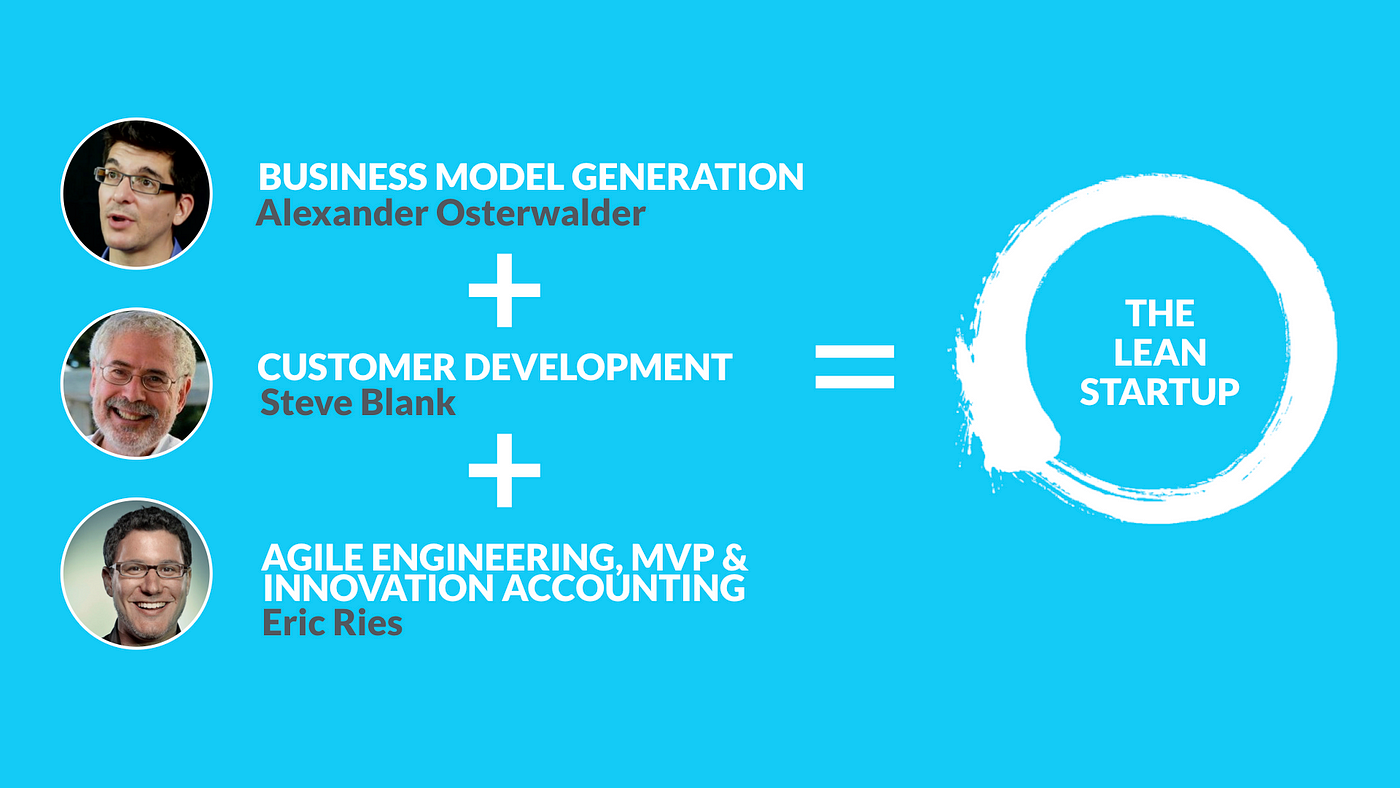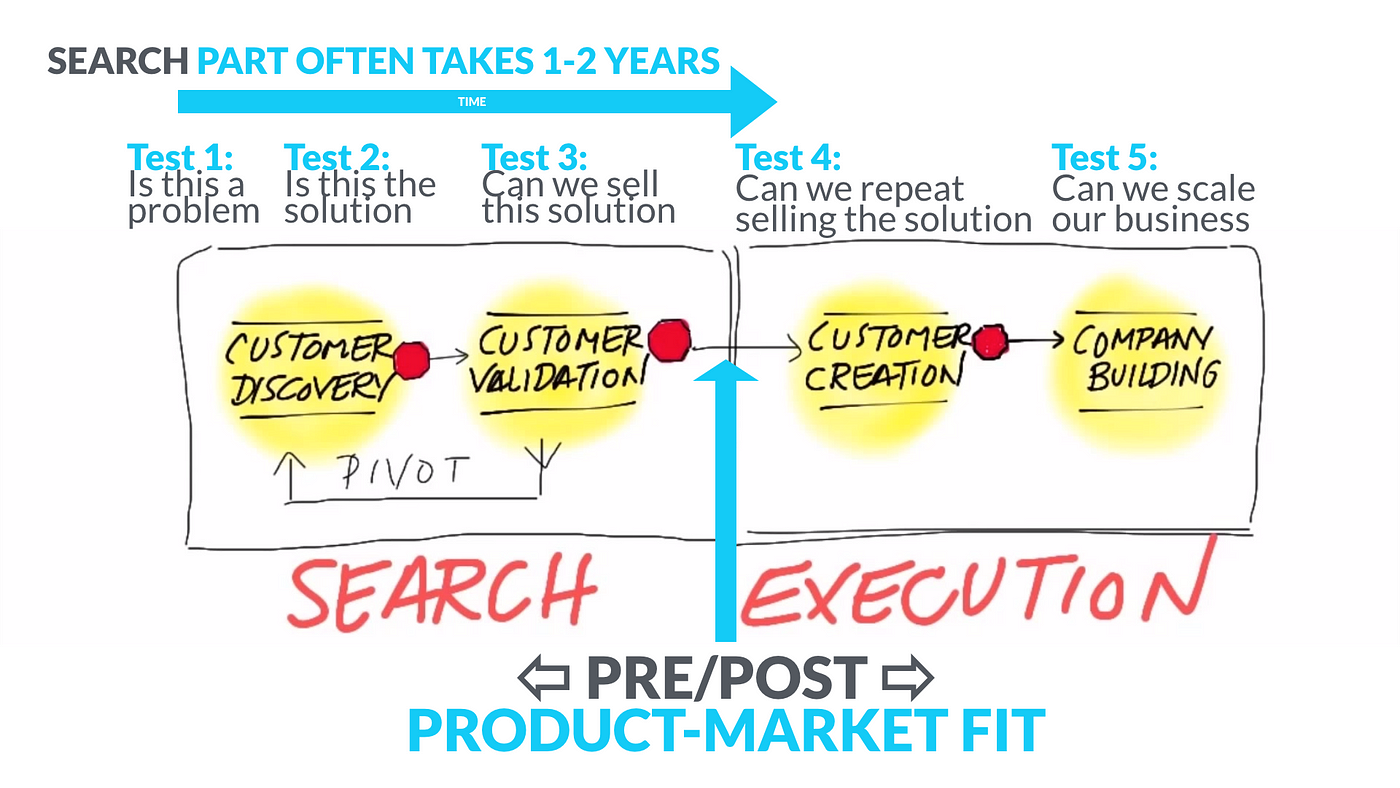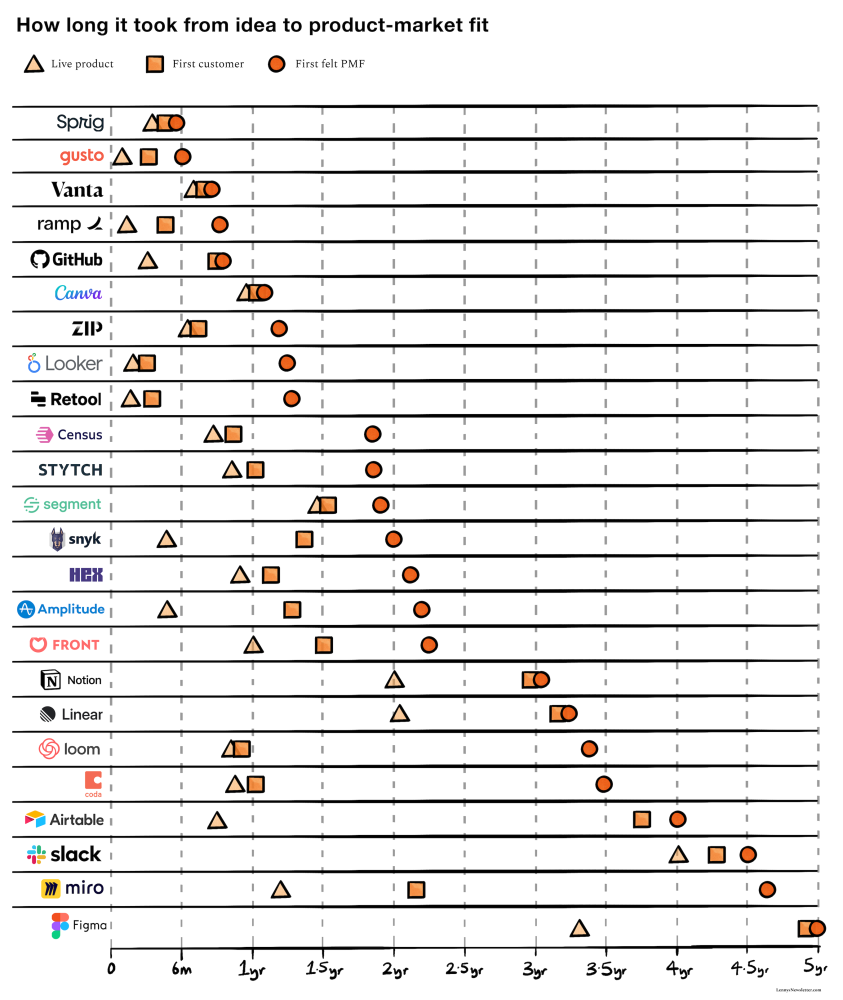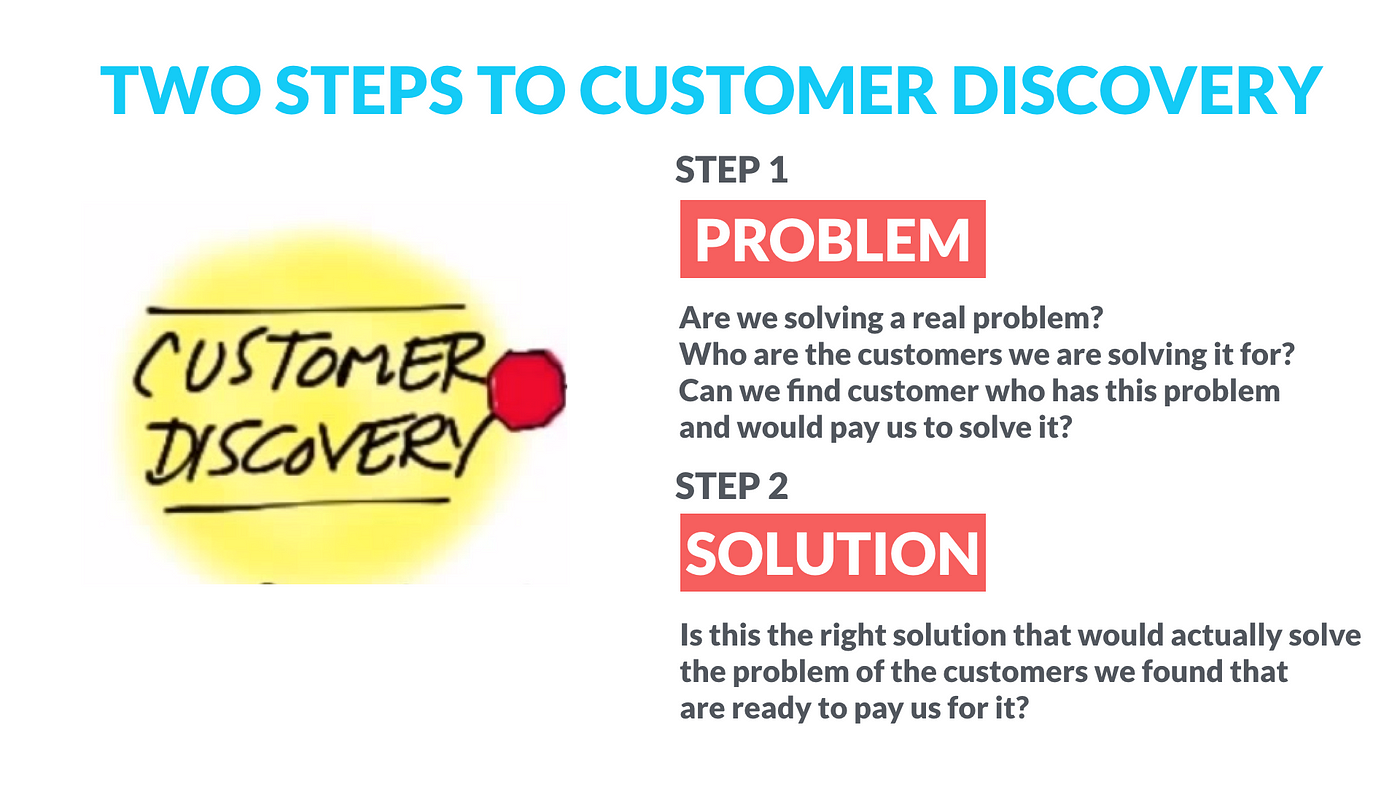
First rule of Customer Development Club: No selling! (at least in the early phase)
Here’s why many people do “Lean Startup” the wrong way – and how to fix it.
A first time founder of a very early-stage startup asked me recently about how to do customer interviews (aka doing an essential activity of the Customer Development part of the methodologies collectively known as The Lean Startup) properly.
(At the end of this article, you’ll also find a bunch of resources to help you conduct customer interviews like a boss).
I get asked this question a lot in my Open Office Hours (Free & Weekly since 2007).
Mostly because of the book by Eric Ries that coined and popularized the Lean Startup methodologies: On the one hand that book is great for how to apply agile engineering principles to building and testing (minimum viable) product for startups — but as the book only briefly mentions Customer Development it in a single paragraph, a lot of people don’t know what it is and that it is one of the essential pillars of the Lean Startup – and the causal reason why the Lean Startup exists.
And for those who might already have heard about Customer Development, they’re very often kind of avoiding it — because doing customer interviews, forcing yourself to contact and talk to strangers, is for many like Justin Wilcox puts it, “a special kind of torture”.

The three horsemen, I mean pillars, of the Lean Startup
That means if we can make more founders know what Customer Development means and how to do it right, it is fair to assume that more startups will survive and prosper if they understand why it’s so important to “get the hell out of the office” to test if they’re just deceiving themselves or if they’re actually solving a real need by putting in the work and exposing themselves to the only thing that counts: The market.
Customer Development done right helps eliminate fundamental and highly dangerous risks in a startup’s business model by providing “good enough” actual data [we’re not talking five Sigma here] to base their decision making on, letting the real customer base be discovered in the market and the solution being developed together with actual real customers.
Customer Development done wrong can lead to a false sense of security (or despair) when making decisions, aka you talked to the wrong people (but didn’t pivot to a more relevant or compelling customer segment or solution) or too few.
Done wrong, it can also lead to a lethal slowing down of real progress if the founders treat it as a scientific project, aka trying to go for a five Sigma result or achieving scientific statistical relevance, before making decisions.
And the name in itself doesn’t really help; “Customer Development”. WTF does that mean, anyways?
Having the insight that we have processes for, and an understanding of, managing product and technical risk (“Product Management”), but no processes or common knowledge about managing the highest risk of all in startups — customer risk (that is to say, will enough people use or buy my product?) — Steve Blank, Eric Ries’ teacher and investor — the father of the Lean Startup movement, coined the name in his book “The Four Steps to the Epiphany”, basing the name on the existing nomenclature for “Product Development” to describe the process of managing customer risk (that was hitherto not named or well described) as “Customer Development”.
To me, it is helpful to think of Customer Development as a better and faster way to minimise wasting your time and money, minimising the risk of failure by finding actual customers, developing your product, your solution — together with your found customers — from day one. In other words, done right it makes the difference of building your house on a pile of untested assumptions or poured concrete — and I know which house I would prefer living in (or which kind of startup and founders I’d invest in).
Let’s take a look at what this Customer Development thing is, why it is so important, and how to avoid the usual mistakes.

What these tennis balls don’t tell you: The road to product-market fit usually takes much longer than you think
In short, Customer Development is basically a simple methodology and a process for getting out of the building and talking to potential customers, the market — before you start building anything.
Because inside of the building, there are only your fantasies. Outside in the market is where the facts are — and it is your job as a startup founder to start testing your fantasies, your guesses about the market, as soon as possible.
Because you want to find out today — not tomorrow or in a year from now — when you’ve wasted a lot of time and resources, a lot of sweat and tears, on building the wrong things for the wrong people.
And don’t take just Steve Blank’s (or my word) for it. Here’s what Paul Graham (Co-Founder YCombinator — the accelerator with shares in the most % of unicorns at pre-/seed stage worldwide) says:
And you think you can reach product-market fit (PMF) in less than 2-3 years? Well, good luck beating the odds; Most statistics show that it takes 2-3 years (including pivots) on average to reach PMF. Just take a look at this (albeit highly cherry-picked) list:

Image copyright Lenny Rachitsky, lennysnewsletter.com
And you have to “get out of the building” at least twice in this Customer Discovery phase.
Here’s why:

The Customer Discovery phase has two steps – you don’t get to skip one (I’m here to tell you, because the original Customer Development process chart doesn’t.)
In first step, we are trying to find out if our hypothetical solution, our product yet not built — our idea — would solve an actual problem for customers, if potential customers actually feel and recognize the problem or need.
And, adding to the task, if and only if we can confirm it is a real problem or need, we also want to find out if it is big enough to make it worth pursuing it , aka if it has a large enough potential market to support building a scalable business around it.
What “big enough” means depends on your personal ambitions and if you expect to rely on venture capital (VC) funding — which most often expects you to show a credible path to $100M ARR in a +20B TAM.
Yes, that’s right. We are in fact not even talking about our hypothetical product in this phase. We’re not showing or selling anything. We’re just listening to people explaining how they dealt with similar situations, solved similar problems in the past and today.
If you’ve already built something before you discovered Customer Development, no sweat! Customer Development is still very much for you.
Now what you have to ask yourself is, do we have enough evidence that this is a problem worth solving, a need big enough to be a huge market potential? If you don’t have a clear problem or need in mind, stop and start defining what it is that you are trying to solve, conversely — immediately start investigating if you’re just building a widget incapable of solving anything important.
If you’re still very uncertain about the size and urgency of the problem or need, put your product development on hold or on the backburner for a couple of weeks and start your Customer Development from the top; Do your research, talk to people you think might have this problem and need and see if you can (in)validate it.
If you started building because you are someone who has the problem or need and you’re an expert in it — or you already have users or customers, scale down development a bit less to say 50% and use the other 50% to start talking to other (strangers) that might have the problem and need to get a sense for scope, urgency, and how easy or hard it is to find and acquire them, and continue developing the product with user/customer feedback.
In any case, who do we start talking with? Well, the type of people we think have the problem/need and that we can define by some common denominators (customer segment). We start broad and rough and refine the traits, the denominators along the way as we learn more from speaking to them.
No, “everybody”, “men over 40″, “dog owners”, etc. are NOT customer segments. They are way too broad and you need to narrow it down. If you’re trying to make a product for “everyone” it will be for exactly noone.
You should never talk to friends, family, or work colleagues. You need to talk to strangers. Why? Friends just want you to succeed, family wants you to avoid risks and be safe, work colleagues might have all sorts of agendas. They all have their biases which will prevent you from getting the unfettered information that you need. Also, you need to be able to find customers outside of your bubble — and you won’t learn how to do that by only talking to people already inside your bubble.
A couple of people a sampling pool does not make. We need to speak to a lot of people to have “good enough” data to base our decisions on.
If you’re doing a b2c, you should at least talk to 150 people in your guesstimated customer segment [per guess / hypothesis]. If you discover another more interesting customer segment along the interviewing process, don’t forget you must also do +150 interviews in that segment to make it count. Why so many, you may ask? Consumers are extremely heterogeneous, which is a fancy word for saying we all have our own tastes and preferences, pains, gains, jobs-to-be-done. We also decide ourselves (with the exception of perhaps a significant other who may get a say) how we spend our time and money. That means we all have different triggers, different reasons why we would buy or use your product, different levels of pain regarding the problem/need, etc. Finding and talking to consumers isn’t that hard — you know how to find them in the real world: The mall, supermarket, downtown, at concerts, movies, theatre, exhibitions, reddit, twitter, etc.
If you’re doing b2b, the good news is you probably need to do less interviews before a pattern or signal materialises. This is because most companies work the same or similarly; There are only so many org chart and process models being executed out there. You probably need to speak to at leat 50 people, though. Now, the bad news is getting their attention, let alone an interview, is going to be so much harder and is going to take much more scheduling and pre-work to make it happen. Remember you get out what you put in; If you try to schedule 50 interviews, you’ll end up with maybe 15. For 50 successful interviews, you’ll have to try to schedule at least 3–4x that amount. Finding b2b customers can be harder than b2c, but you can find them on LinkedIn, at events, trade shows and conferences (you can even put on a conference yourself to bring them to you), corporate lobbies and parking lots, airport lounges, special interest groups or organisations, etc.
To sum it up, the point of the “Customer Discovery” phase is to test if there is an actual need in the market before building anything.
We’re not testing with the goal of five Sigma here. We’re content with something more along the lines of ca. 40% confidence to base our decisions on while still moving further at speed.
Furthermore, is it the types of people (customer segments) that we believe have the problem or could it be that someone else actually needs it more?
- Do they have the problem or need?
- Do they know that they have the problem or need?
- Have they been actively seeking for a solution to the problem or need today or in the past?
If the answers are yes to all three questions, you might have found the right customer segment for you to address — your early adopters.
And we keep at it, interviewing (potential) customers until we either
- find significant signal, say e.g. that 40% of a 100 interviews actually confirms [indirectly, remember we are not asking them “do you have this problem?”] there is a felt need or problem
- do NOT find significant signal
- find another problem or need during the interview process that is more compelling to pursue.
Oh, and BTW — We don’t need to interview customers to test if people have fundamental needs like getting fit, communicating with other people, find romantic partners, and so on and so forth.
It should be obvious that certain kinds of needs already exist and can be proven by pointing to existing behaviours, existing solutions — and don’t need further verification. In those cases, we’re interviewing customers to find out if our new solution — our exact value proposition(s) — our unique promises to the customer, is what actually resonates with the customer segment to the point of paying for it [with their money, time / engagement, or personal data].
In the second step of Customer Discovery, after actually finding confirmation of a real and felt problem or need, we get out of the building again to test if our hypothetical solution.
We want to not only confirm that we understand the problem or need — we also need to confirm that our interpretation of a solution is actually one that the customers would use to solve it.
Why do we need to get out of the building yet again to test our idea of the solution with our potential customers? Because our first idea of the product, the solution, is very often NOT the version of the product or solution that the customer would use or buy.
We need to hold back the urge to hunker down in the office and build build build (especially if your founder team consist of developers and engineers) just because we’ve found some signal in the market for an interesting problem/need worth addressing. We first need to test that our idea of the solution is aligned to what the customer can/will actually use or buy.
So we get out of the building again to talk to the people who indicated they actually have and feel the need or problem — our early adopters – a second time. No, we do not go back to talk about the solution with everybody — just the people we interviewed who identified (indirectly) that they have the problem or need, and at best also demonstrated that they are aware of having it and have already tried to solve it — and fall into our potential customer segment.
And no, we don’t test for the viability of our proposed solution by selling it to them (you’ll be selling soon enough — hold back for now). We are not trying to convince them why they should use it in the solution interviews. This is not the time.
And no, we don’t start building elaborate solutions before we first go out to test our hypothetical solution. Sketches and mockups are what we start testing with. Sketches, Click Dummies and PowerPoints are more than enough at this stage.
Again we look for significant signal (emotional reactions) and we iterate (small incremental change) or pivot (big change that affects your business model) using the feedback we are getting and go out of the building again to show the changed hypothetical solution.
Keep in mind, if you do pivot (add a fundamental change to your business model), you need to take one step back and validate that change before you get to proceed. (This is what the arrow labeled “pivot” between “customer discovery” and “customer validation” in the illustration means). The exception being if the pivot was caused by data, aka validation or invalidation, from the market — if so, proceed without taking the step back.
If, and only if, we can find significant signal we start to build the solution.
This is when we start with building an MVP — Our first Minimum Viable Product. And it is at this stage in our journey the “Lean Startup” book by Eric Ries becomes a very useful guide. And we start to try selling it — because we have now moved on to the Customer Validation phase of our startup journey.
So we see the Customer Discovery phase is never about selling. No selling is allowed. Period. Not when testing for the problem and not when testing for the solution. Not ever. Of course, this is hard to do for startup founders — we all want to bend the world to our will — so we need to practice holding back the sales pitch.
Why is no selling allowed? Simply because you will then be coloring the feedback you’re about to get and you as a startup founder don’t scale — Once you’re out of the room, you’ll never know if they would buy it (and what they’d say about your potentially crappy solution).
And no, a survey is not a customer interview — it has to be in-person so you can actually feel the emotions of the interviewees as they talk about the problem and your proposed solution.
You can also think of Customer Development as an unfair advantage, a super fast and cheap way to becoming a domain expert in your potential customer’s pains, gains and jobs to be done. No technical skills, no engineering required.
And if you’re doing it right, it will also work as your secret marketing weapon as the customers are going to literally hand you the best sales arguments, your perfect sales copy on a platter in the interviews.
Furthermore, if you’ve been doing this right, you now also have your first customers — and that even before you built the product! How about them apples?

The TL;DR Customer Development summary in one image
Customer Development Resources:
To learn more, first of all you should take this free course with Steve Blank, the father of Customer Development and the Lean Startup. It’s the Stanford curriculum called Lean Launchpad — for free. It will teach you everything you need to know about building a startup (at the early stages): https://www.udacity.com/course/ep245
For more in-depth information on Customer Development, read the book “The Four Steps to Epiphany” that started the whole Lean Startup movement.
Read these presentations from the entertaining and actionable Rob Fitzpatrick on how to actually do customer interviews: http://www.slideshare.net/xamde/summary-of-the-mom-test http://www.slideshare.net/robfitz/mom-test-customer-development-30m (And you also might want to pick up his book, The Mom Test)
These videos with Steve Blank on customer discovery and customer interviews you can use as a checklist and fallback reference on how-to conduct interviews: http://startupweekend.wistia.com/medias/tao3s8hf7l http://startupweekend.wistia.com/projects/zt618zz0r7 https://vimeo.com/groups/204136/videos
And check out Justin Wilcox — He’s a great resource on practical tricks and tips like how to select your customer segments to interview and b2b and b2c interview scripts: http://customerdevlabs.com/
And if you’re still hungry for more, get the biblically sized The Startup Owner’s Manual for everything in one single book for reference. (Auch auf deutsch als “Das Handbuch für Startups” erhältlich.)
Did I forget something? What would you add to your list of Customer Development resources?
Now get the hell out of the building!
Got startup? Get smart, get funded! Enroll in my Pitching Masterclass now!
Header image by Dave Fayram / Ninjacam. Some rights reserved.




